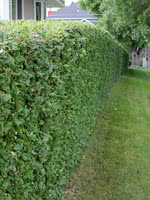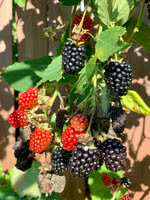Mon-Fri 9am - 5pm Mountain time
Peking Cotoneaster vs Balsors Blackberry
Cotoneaster acutifolia
Rubus fruticosus Balsors
NOT AVAILABLE THIS SEASON - MIGHT RETURN
COMING SOON
Peking Cotoneaster is a medium-sized shrub that is well adapted to colder climates. Best suited for use as a hedge, Peking Cotoneaster has dark green foliage that turns a stunning reddish orange in the fall.
Hardy fruit guru, Bernie Nikolai (DBG Fruit Growers), has started to recommend grafting hardy pear varieties to Peking Cotoneaster after his experiences were successful and produced fruit faster than other rootstocks. Remember to leave some nurse limbs if you try this.
The Balsors Blackberry is a cold-hardy variety that produces very large, sweet and juicy blackberries late in the summer. They are great for baking and fresh eating.
Balsors Blackberry are floricanes, primarily fruiting on second year canes. Each spring cut back all two-year old canes, leaving only the last year’s growth. This is a self-pollinating variety, so it doesn’t require a second plant nearby to set fruit.
Peking Cotoneaster Quick Facts
Balsors Blackberry Quick Facts
In row spacing: 0.3 m (1.0 ft)

